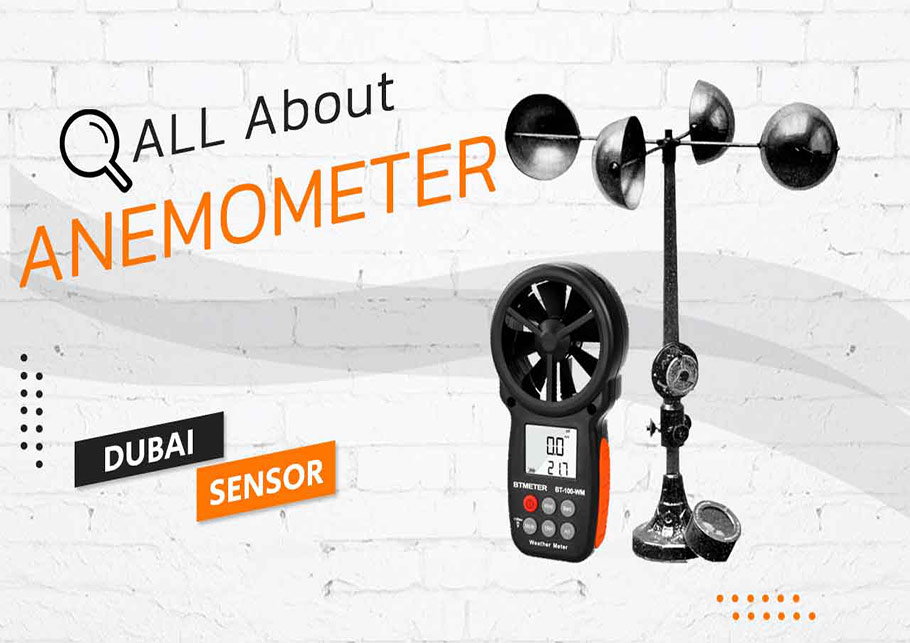Comparing Digital and Mechanical Anemometers: Which is Right for You?
Comparing Digital and Mechanical Anemometers: Which is Right for You?
Blog Article
All You Required to Find Out About Anemometers: Just How They Work, Why They Matter, and Where to Make use of Them
Anemometers, though commonly overlooked in the world of clinical tools, play a vital role in various areas, providing important insights into wind rate and air flow patterns. As we delve right into the intricacies of anemometer modern technology, we will certainly reveal the internal workings of these tools, their value, and the essential considerations when selecting the right anemometer for specific applications.

Anemometer Basics
A crucial instrument made use of to determine wind speed and direction, the anemometer plays a critical duty in weather forecasting and numerous sectors. An anemometer commonly includes three or 4 mugs that turn in the wind, a vane that points into the wind, and sensing units to track the turnings or motions. By determining the turnings or movements over a certain time period, the anemometer can determine wind speed. The vane helps establish wind instructions by directing into the wind, giving useful information for weather condition forecasting, air travel, maritime operations, environmental tracking, and wind energy applications.
There are different kinds of anemometers offered, consisting of cup anemometers, vane anemometers, hot-wire anemometers, and sonic anemometers, each with its special features and applications. Cup anemometers are commonly used for fundamental wind rate measurements, while vane anemometers are chosen for directional measurements.
Principles of Anemometer Operation
Building on the fundamental understanding of anemometer basics, the principles of anemometer operation elucidate the technicians behind wind rate and direction measurements. Mug anemometers, for instance, have 3 or more mugs that record the wind, triggering them to rotate much faster as the wind rate boosts. Hot-wire anemometers rely on a warmed cord that cools down as wind passes over it, with the price of cooling determining the wind rate.
Value of Anemometers
Anemometers play a vital duty in measuring wind speed and instructions, giving essential information for weather condition projecting, environment researches, ecological surveillance, and air travel operations. Meteorologists depend on anemometers to gather precise wind data, aiding them recognize weather condition patterns, forecast tornados, and problem timely cautions to the public. Wind ranch operators use anemometers to assess wind conditions and make best use of electricity production from wind generators.
Applications Throughout Various Industries
Applications of anemometers span throughout varied industries, showcasing their versatility and energy beyond weather forecasting. In the renewable resource market, anemometers play an essential duty in assessing wind conditions for wind farm placements, guaranteeing optimum power manufacturing. Industries like building and mining utilize anemometers to keep an eye on wind speeds, crucial for safety and security protocols, specifically when operating at heights or in open-pit mines where strong winds can posture risks. Anemometers are additionally integral in the aeronautics market, assisting pilots in understanding airspeed and wind instructions for safe liftoffs and touchdowns. The maritime sector gain from anemometers for ship navigating, helping seafarers anticipate weather modifications and readjust courses more helpful hints as necessary. In farming, anemometers aid farmers in managing plant splashing by providing real-time information on wind rate to prevent drift. Anemometers find applications in Cooling and heating systems to enhance air movement and boost power efficiency in structures. The varied use cases of anemometers underscore their value throughout different sectors, highlighting their vital role in enhancing operational security and performance (anemometer).

Selecting the Right Anemometer for Your Demands
For general objectives, a mug anemometer is ideal for gauging wind rate, while a this post vane anemometer provides wind direction information. Hot-wire anemometers are suitable for reduced airspeed dimensions, and ultrasonic anemometers offer high precision and sturdiness.

Final Thought
In final thought, anemometers play an important duty in determining wind speed and direction throughout different sectors. Comprehending the concepts of anemometer procedure is vital for choosing the ideal device for particular needs. From weather forecasting to aeronautics, anemometers are essential devices for ensuring and collecting exact data safety and security in various applications. When selecting the most ideal tool for determining wind problems., it is vital to consider the relevance of anemometers in order to make informed decisions.
There are different kinds of anemometers offered, consisting of cup anemometers, vane anemometers, hot-wire anemometers, and sonic anemometers, each with its special attributes and applications. Mug anemometers are generally made use of for basic wind rate dimensions, while vane anemometers are favored for directional dimensions. Hot-wire anemometers are read this article appropriate for reduced airspeeds, and sonic anemometers are suitable for high-precision dimensions in research study and commercial settings.Building on the foundational understanding of anemometer basics, the principles of anemometer operation elucidate the technicians behind wind rate and direction dimensions. For basic objectives, a mug anemometer is ideal for measuring wind speed, while a vane anemometer supplies wind direction data.
Report this page